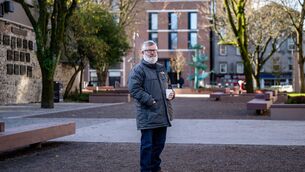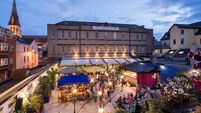Cycling the great bird migration route
When my children were small, visiting France meant a 20-hour ferry ride and lots of motoring, the car crammed with all the accoutrements of camping. Neither the ferries nor the cars were as comfortable then as they are today but it was fun nonetheless and those were wonderful times. Camping remains the best option for most couples with children but the rest of us can avoid the hassle; there are cheap flights to several of France’s most attractive locations.
The French Atlantic coast has always been a big hit with Irish people and it’s easy to see why. This is land of sun, fine beaches, gorgeous food and seductive wines. But it’s not just people who visit; the coastline of the Bay of Biscay, which the French call the Golfe de Gascogne, is on one of the world’s great bird migration routes. Birds fly along coasts so that they don’t lose their way; those from Britain, Ireland and the Nordic countries encounter some of Europe’s most important wetlands as they travel down the French coast.
My destination last week was La Rochelle. This small city, with a turbulent history and romantic architecture, has an ancient connection with Ireland; many the 10,000 Huguenots, who settled in Dublin or Cork when Louis XIV outlawed Protestantism in 1685, came from the Charentes-Poitou region. The ‘Protestant Citadel’, however, retains none of the trappings of its dour Calvinist past. This city of pleasure has fine restaurants serving sinfully delicious food and wine.
Cycling, is especially popular with the French; the Tour de France, indeed, is the world’s greatest cycle race. Not surprisingly, therefore, bikes are actively encouraged in La Rochelle; painted bright yellow, they can be borrowed free of charge.
Cycling is also the preferred mode of transport on the Isle de Ré. Just north of La Rochelle, this narrow 30km long island with vineyards fruit-trees and salt-pans is said to be the sunniest location in France. There are more than a hundred kilometres of cycle-track and every village seems to have bicycles for hire. Rates range from about e10 to e13 per day for a standard bike, about e20 for a three-day hire. Tandems and bikes with child seats are available. It’s easy cycling territory.
For the cycling naturalist, the Isle de Ré’s biggest attraction is the Lilleau des Niges reserve, one of six on the west coast of France which are owned by the Ligue pour la Protection des Oiseau. The cycle paths offer excellent vantage points from which to watch the egrets, black-winged stilts and avocets. Last week, the place teemed with shelducks, the proud parents leading their broods of little pied ducklings. The explosive song of the Cetti’s warbler erupted from the bushes. A hobby and a marsh harrier patrolled the air-space over lush grasses and tall reed-beds waving in the wind. Last month’s rare visitor list included a little gull, a sacred ibis, pied flycatchers, a golden oriole and a duck common in Ireland, the red-breasted merganser, which seldom ventures so far south. One of the celebrity natives is the bluethroat, which looks like a robin with a blue, rather than a red breast.
The reserve, consisting of Dutch-style polders enclosed by dykes created between the 16th and 19th Centuries, is part of a much larger eco-system, that of the Baie d’Aiguillon. This huge shallow inlet, which empties at low tide to uncover vast areas of mudflat, supports up to a quarter of a million wildfowl and waders in winter. Geese and ducks feed on its rich zostera beds. There can be as many as 50,000 black-tailed godwits in the autumn, making l’Aiguillon one of the most important sites for the species in Europe.
The great bay is part of an ancient river delta gradually filling with silt. But the wetlands do not end at the coastal embankments of the mainland. They extend inland on each side of the Sèvre Niortaise river. The salt marshes give way to their fresh-water equivalents upstream. The Marais Poitevin, an area of some 80,000 hectares, is an extraordinary place and I shall dwell on its virtues in next week’s column.
* www.franceguide.com and www.iledere.fr are useful websites for travellers to the area.













